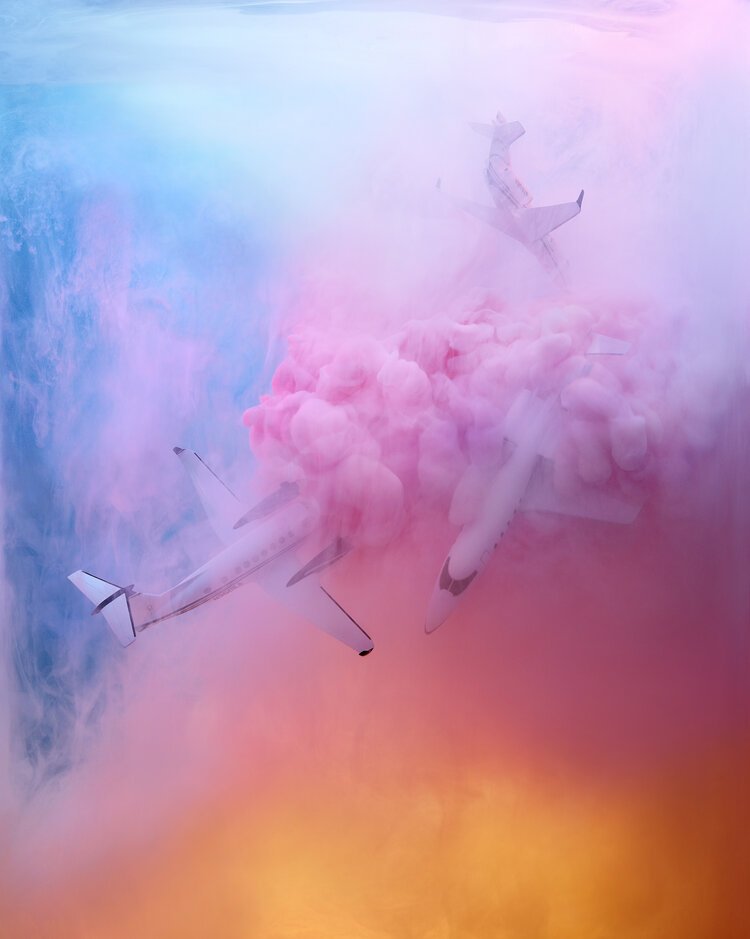From Our Archives: David Lachapelle: Color Crash
© David LaChapelle, Aristocracy Two, 2014.
This interview was featured in issue No. 16 - Chaos
Musée Magazine: Your Aristocracy series shows private jets crashing as a thing of beauty. You create structure from chaos, order from disorder. Do you consider yourself a revolutionary?
David LaChapelle: I don’t think of myself in terms that have political connotations. I take photographs and do what I want – I try to say through a photograph the things I wish to express.
Musée: You have returned to your roots of your early work with this series, and those immediately preceding this – what brought about that change? Will you return to more celebrity focused work? Do you see this series as a return to your previous explorations, or do you see this as a natural progression of your body of work?
David: I make images that matter to me. I don’t have a map or plan. I go in the direction that feels right.
Musée: Why Aristocracy, why now?
David: The race to destinations that are unattainable. A continuous, restless race with no end.
Musée: Maybe I am being too obvious here, but for years you photographed the rich and famous, the fabulous and the, literally, jet setting crowd and now they are burning – what is your message?
David: I see things lost, nothing as burning. The planes are circling in confused spirals. The accumulation of luxury and wealth that has no end. The continuous journey of acquiring more. And the busyness of accumulation. The unquenchable thirst of materialism.
© David LaChapelle, Aristocracy One, 2014.
Musée: How did you produce the plane crash images? Were they models you made? What is the process behind these?
David: They are models of private jets in a large water tank. Tempera paint was used to create the clouds along with gelled lights.
Musée: The difference between Aristocracy One, and Aristocracy Two is, to me, that One seems to illustrate a plane, on fire, swaying into oblivion. It’s very graceful, whereas Two seems to be two planes colliding and has a much more urgent, less tranquil feeling – do you read these images as time lapse, or as moments frozen in time?
David: It’s variations of a theme.
Musée: Could you talk a bit about your use of color in this series? Color is a big part of all your work, why did you go with this palette?
David: I used colors that felt good next to each other. Such as sunrises/sunsets.
Musée: Your work has always been steeped in art history, your work references not only well known works, but movements and times – are these Aristocracy works referencing a specific period or time? I see Turner.
David: There is the Turner clouds and the color field paintings that inspired me. A lot of negative space. Also, maybe even The Hudson River Valley School as well.
Read the rest of the interview in Musée Magazine's issue No. 16 - Chaos







